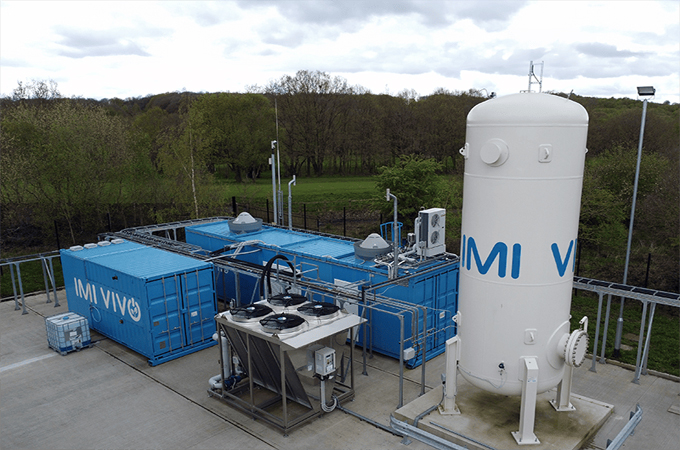
The Translational Energy Research Centre (TERC) recently installed an IMI electrolyser onsite to conduct cutting-edge scientific research into hydrogen and its role in the energy transition.
IMI recently met with TERC research associate Dr Andy Heeley to understand more about this work, and why IMI’s electrolyser design emerged as the best option from a rigorous tender process.
The TERC is located in the manufacturing heartland of Sheffield, UK. The site forms part of the city’s innovation district, and its work is truly global, bringing together industry and academics worldwide, according to IMI Process Automation.
BRIDGING THE GAP
As a national centre for green energy research, TERC provides a critical link between academia and industry. The overriding strategy is to develop commercially viable low-carbon technologies that could support a net zero economy.
According to its website, TERC is home to ‘some of the largest and most exciting testing equipment in Europe’, providing a fast track for developing products in the UK and abroad.
This equipment is accessible through the European Regional Development Fund, the UK’s Department for Energy Security and Net Zero funding and a mixed funding model supported by the UK government, commercial partners and contract income. This model helps remove much of the financial risk associated with large-scale industrial pilots.
This is critical because only some of today’s organisations have established R&D departments, making moving ideas along the Technology Readiness Level scale difficult. As Heeley points out, much of TERC’s work occurs between levels three and six of this scale, where an initial concept eventually becomes a usable prototype.
PIONEERING HYDROGEN RESEARCH
TERC covers energy production and utilisation across four key areas: biomass, carbon capture, sustainable aviation fuels, and hydrogen. The final area is where the IMI PEM electrolyser is most often used, though all are connected and rely on electrolysis to some degree.
One main focus for Heeley and his team is how renewable energy, such as wind and solar, can be used to create hydrogen – both as an energy carrier or ‘vector’ and as a zero-carbon fuel source.
As a fuel, hydrogen can be stored and used in various industrial processes, such as steel, glass, and cement manufacturing. These processes incur a significant carbon penalty due to the high temperatures required during production.
Metals manufacturing, for instance, could use green hydrogen as a zero-carbon fuel source to power the metal fabrication process, eliminating the emissions created when oil or gas is burned. This, Heeley notes, is the ideal scenario, but getting there requires plenty of input from sites like TERC – not least because the technology is still relatively new and untested for end users.
The IMI electrolyser is also involved in research on sustainable aviation fuels (SAF). Here, hydrogen is used as a feedstock for a series of thermochemical processes, ultimately aiming to create the long-chain hydrocarbons used to power jet engines.
Heeley points out that this is a vibrant area of research, given the industry’s emissions. But it’s also important because many countries are now mandating the use of SAF. In the UK, for example, 2% of the total fuel supplied to UK aviation must be sustainably sourced by 2025, and this figure rises to 10% by 2030. Clearly, this promises to be a major challenge given that UK flights consume a considerable amount of fuel yearly, so there will need to be more jet fuel refining capacity and increased investment in SAF manufacturing technology.
ENGINEERING LONG-TERM SUCCESS
As a publicly funded research institution, Heeley and his team had to be fair and impartial when selecting electrolyser technology. This meant independently scoring each bid against a set of requirements, including cost, generation capacity, and effectiveness over a 10-year window. The TERC team assessed cost and value, whether the offer met the required technical specifications, what sales support IMI was able to deliver, and the whole life costs of the PEM technology. In terms of delivery and installation, TERC needed to be certain that the plant would be completed and handed over with sufficient training provided for its staff.
The IMI electrolyser scored highest on average across all these points. However, the team’s level of detail set IMI’s application apart.
From the initial letter of intent to providing ongoing clarifications throughout the tender process, Heeley said IMI could answer any questions his team had in a level of detail seen in few other bids. This detail, alongside the company’s engineering knowledge and experience in regulated industries, ultimately saw IMI chosen from a pool of competitors. The electrolyser is an anchor for much of TERC’s research, having been installed and operational since 2023. --OGN


















































































